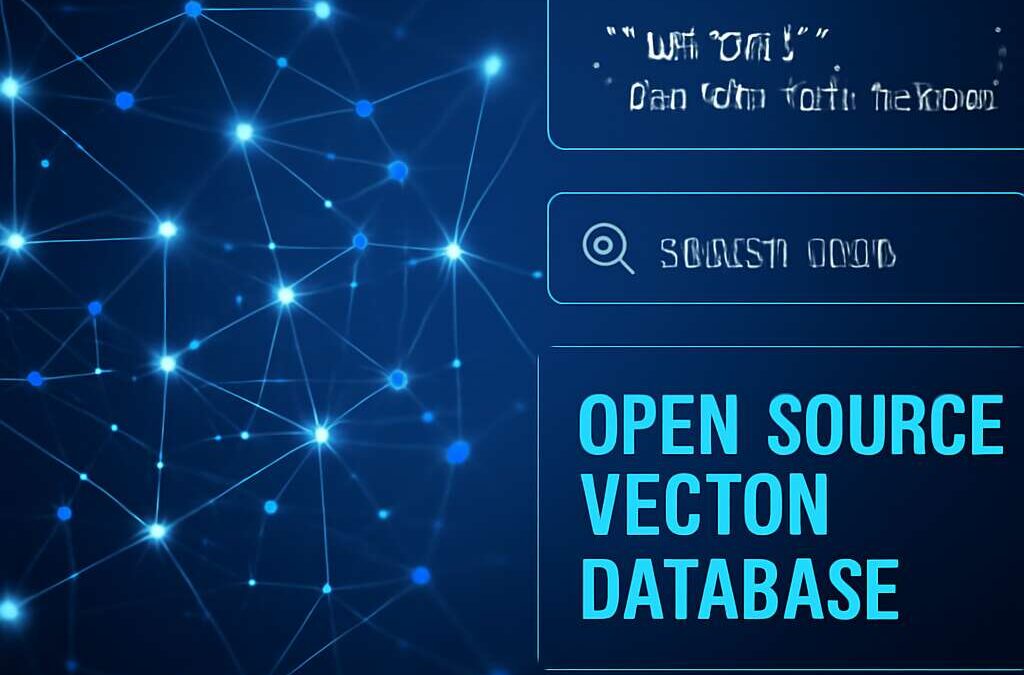Open-source vector databases
In today’s fast-paced development landscape, finding the right code snippet can feel like searching for a needle in a haystack. Traditional keyword-based code search often misses the mark, returning irrelevant results or nothing at all. Enter open-source vector databases—the backbone of modern, semantic code search and retrieval systems. By converting code into high-dimensional vectors, these databases enable developers to find semantically similar snippets, functions, or patterns with lightning speed.
This guide dives into the who, what, where, why, and how of leveraging open-source vector databases for code search. You’ll discover top projects (like Milvus, Qdrant, Weaviate, Vespa), actionable setup steps, and concise insights to optimise your implementation.
Who Benefits from Semantic Code Search?
- Backend & frontend developers who need to quickly locate reusable components.
- Data scientists & ML engineers building AI-powered coding assistants.
- DevOps teams managing large monorepos and microservices.
- Technical writers & educators curating code examples.
What Are Open-Source Vector Databases?
Vector databases store and query high-dimensional embeddings. For code search, you first convert code snippets into numerical vectors using embedding models (e.g., OpenAI, Hugging Face’s CodeBERT). Then, the vector database handles nearest neighbour search—returning the most semantically similar vectors.
Key Components
- Embedding generation: Transform code into vectors.
- Indexing: Create efficient structures (HNSW, IVF, PQ).
- Search API: Query by vector to retrieve matches.
Where to Deploy
- Local server: Great for experimentation and privacy.
- Cloud instances: AWS, GCP, Azure—scale on demand.
- Kubernetes: Container orchestration with Helm charts.
- Docker Compose: Quick spin-up for prototypes.
Why Use Vector Databases for Code Search?
- Semantic understanding: Finds similar logic, not just text matches.
- Language-agnostic: Works across Python, Java, JavaScript, and more.
- Scalability: Handles millions of code snippets with sub-second queries.
- Extensibility: Integrate with CI/CD, chatbots, and documentation systems.
How to Build a Semantic Code Search Pipeline
Follow these steps to get up and running:
- Choose your vector database
- Evaluate features, license (Apache 2.0, AGPL), and community support.
- Select an embedding model
- Options: CodeBERT, StarCoder, or OpenAI’s code embeddings.
- Install prerequisites
pip install pymilvus transformers - Generate embeddings
from transformers import AutoModel, AutoTokenizer tokenizer = AutoTokenizer.from_pretrained("microsoft/codebert-base") model = AutoModel.from_pretrained("microsoft/codebert-base") def embed(code): tokens = tokenizer(code, return_tensors="pt") outputs = model(**tokens) return outputs.last_hidden_state.mean(dim=1).detach().numpy() - Initialize and configure the database
from pymilvus import connections, FieldSchema, CollectionSchema, DataType, Collection connections.connect("default", host="localhost", port="19530") fields = [ FieldSchema("id", DataType.INT64, is_primary=True), FieldSchema("embedding", DataType.FLOAT_VECTOR, dim=768) ] schema = CollectionSchema(fields, "code_search") collection = Collection("code_snippets", schema) - Insert vectors
embeddings =ids = list(range(len(embeddings))) collection.insert([ids, embeddings]) collection.create_index( "embedding", { "index_type": "HNSW", "metric_type": "IP", "params": {"M": 16, "efConstruction": 200} } ) collection.load() - Query by vector
query_emb = embed(user_query) results = collection.search( [query_emb], "embedding", {"metric_type": "IP"}, limit=5 ) - Refine and integrate
- Tweak index parameters (
M,ef) for speed/accuracy. - Plug API into IDE extensions or web UIs.
- Tweak index parameters (
Top Open-Source Vector Databases
1. Milvus
- License: Apache 2.0
- Core: Go/C++; clients in Python, Java
- Highlights: Cloud-native, horizontal scaling, GPU support
2. Qdrant
- License: Apache 2.0
- Core: Rust; clients in Python, Rust
- Highlights: Fast HNSW, payload filtering, vector+metadata support
3. Weaviate
- License: BSD-3-Clause
- Core: Go; Python client
- Highlights: Built-in ML modules, GraphQL API, modular vectorizer
4. Vespa
- License: Apache 2.0
- Core: Java; HTTP API
- Highlights: Real-time indexing, custom ranking expressions
5. FAISS & Annoy
- License: MIT
- Core: C++; Python bindings
- Highlights: Lightweight, embeddable, ideal for prototypes
6. Chroma & LanceDB
- License: MIT
- Core: Python-first
- Highlights: Developer-friendly, integrates with LangChain
Choosing the Right Vector Database
Consider these factors:
- Scale: Number of vectors, query volume, average latency
- Budget: GPU vs. CPU costs, self-hosting overhead
- Features: Filtering, payload support, hybrid search
- Integration: Client libraries, ecosystem, community support
| Database | Best For | License |
|---|---|---|
| Milvus | Enterprise-scale, GPU acceleration | Apache 2.0 |
| Qdrant | Metadata-rich search, speed | Apache 2.0 |
| Weaviate | ML pipeline, GraphQL | BSD-3-Clause |
| Vespa | Real-time, custom ranking | Apache 2.0 |
| FAISS | In-app embeddings, prototypes | MIT |
| Annoy | Simple, memory-efficient | MIT |
Step-by-Step: Milvus + CodeBERT Demo
- Setup Milvus via Docker
docker run -d --name milvus-standalone -p 19530:19530 milvusdb/milvus:v2.2.5-rc8-20241212-d20e22f - Install Python SDK
pip install pymilvus transformers - Prepare Code Snippets
code_snippets = [ "def add(a, b): return a + b", "function sum(a, b) { return a + b; }", # More snippets... ] - Embed & Index
(See “How to Build” section for code snippets.) - Query Example
results = collection.search(, "embedding", {"metric_type": "IP"}, limit=3 ) for hit in results[0]: print(code_snippets[hit.id], hit.distance)
Best Practices & Tips
- Dimensionality: Match embedding size (e.g., 768 for CodeBERT).
- Index tuning: Increase
efConstructionfor accuracy; adjustefat query time. - GPU vs. CPU: GPUs speed up indexing/inference; CPUs often suffice for small to mid-scale.
- Sharding: Distribute large datasets across multiple nodes.
- Monitoring: Track latency, throughput, and hardware utilization.
- Security: Enable TLS/SSL and authentication for production.
Frequently Asked Questions (FAQ)
Related Topics
- Embedding Models for Code: Explore CodeBERT, StarCoder, GPT embeddings
- Hybrid Search Strategies: Combine Elasticsearch with vector indexes
- Building AI Coding Assistants: Integrate semantic search in IDE plugins
- Kubernetes Helm Charts: Deploy vector databases at scale
- Monitoring & Observability: Use Prometheus and Grafana for DB metrics
Conclusion
Open-source vector databases are revolutionising code search by enabling semantic, scalable, and precise retrieval. Whether you choose Milvus for GPU-powered scale or Qdrant for metadata-rich queries, the workflow remains similar: generate embeddings, index them, and query by vector. With the step-by-step guidance above, you’re ready to integrate semantic code search into your next project, delight users, and accelerate development cycles.
